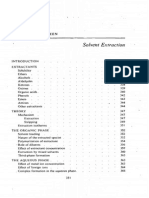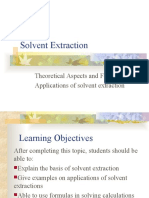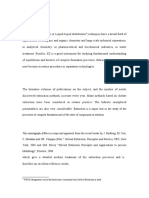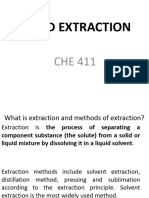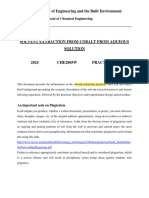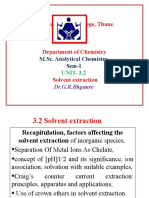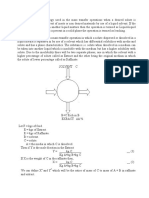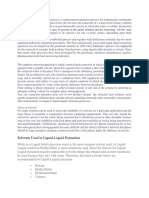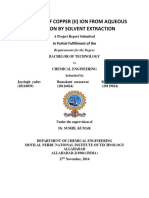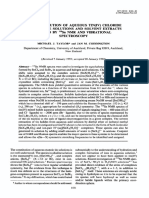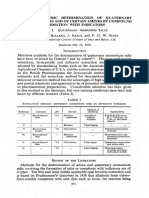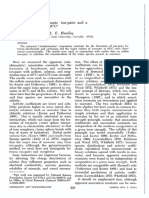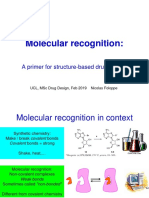0% found this document useful (0 votes)
48 views6 pagesSolvent Extraction - Chapter - 6
Solvent extraction is a method for separating metal ions from water-based solutions using an oil-based liquid with extractants that bond with the metals, allowing them to be collected. The process involves two main steps: extraction, where metals move into the organic solvent, and stripping, where they are returned to a water solution. This technique is widely used in metal production, nuclear reprocessing, and other applications, utilizing various types of extractants and modifiers to enhance efficiency.
Uploaded by
mdarifgb008Copyright
© © All Rights Reserved
We take content rights seriously. If you suspect this is your content, claim it here.
Available Formats
Download as PDF, TXT or read online on Scribd
0% found this document useful (0 votes)
48 views6 pagesSolvent Extraction - Chapter - 6
Solvent extraction is a method for separating metal ions from water-based solutions using an oil-based liquid with extractants that bond with the metals, allowing them to be collected. The process involves two main steps: extraction, where metals move into the organic solvent, and stripping, where they are returned to a water solution. This technique is widely used in metal production, nuclear reprocessing, and other applications, utilizing various types of extractants and modifiers to enhance efficiency.
Uploaded by
mdarifgb008Copyright
© © All Rights Reserved
We take content rights seriously. If you suspect this is your content, claim it here.
Available Formats
Download as PDF, TXT or read online on Scribd
/ 6












